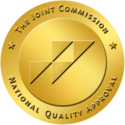Fentanyl Addiction Treatment in Idaho
In 2023, the Drug Enforcement Administration (DEA) seized over 79.5 million counterfeit pills that were laced with fentanyl. The Administration also seized almost 12,000 pounds of fentanyl powder. This powerful synthetic opioid is responsible for numerous overdose deaths and continues to be a danger to individuals throughout the United States.
But Eagle Creek Ranch is here to help break the cycle and change the narrative, one life at a time.
Fentanyl overdoses have claimed many lives. Fentanyl’s effects have permanently altered families and hurt communities. That’s why our Nampa, Idaho substance use disorder treatment facility strives to provide ongoing support for those who are suffering from fentanyl abuse. We can stop the fentanyl overdose numbers from rising and help bring healing to suffering individuals and their family members.
 Fentanyl is a potent synthetic opioid medication primarily prescribed to manage severe pain, especially after a surgical procedure. It belongs to the class of drugs known as narcotic (opioid) analgesics, and it works by binding to the body’s opioid receptors, thereby blocking pain signals and producing feelings of euphoria and relaxation. Fentanyl is estimated to be 50 to 100 times more potent than morphine and is considered one of the strongest opioids available for medical use.
Fentanyl is a potent synthetic opioid medication primarily prescribed to manage severe pain, especially after a surgical procedure. It belongs to the class of drugs known as narcotic (opioid) analgesics, and it works by binding to the body’s opioid receptors, thereby blocking pain signals and producing feelings of euphoria and relaxation. Fentanyl is estimated to be 50 to 100 times more potent than morphine and is considered one of the strongest opioids available for medical use.
While fentanyl can be prescribed by healthcare professionals for legitimate medical purposes, it also carries a high risk of addiction and dependence, particularly when misused or taken recreationally. Illicitly manufactured fentanyl, often sold on the black market, poses an even greater danger due to its unpredictable potency and widespread availability. Its potency increases the risk of overdose, respiratory depression, and death, making it a significant public health concern.
Fentanyl abuse has contributed to a rise in opioid-related overdoses and fatalities, prompting increased efforts in education, prevention, and treatment to address this alarming trend.
Contact Eagle Creek Ranch
Recovery Today!
Why Wait? Find The Help You Need By Reaching Out To Us Today! Our Admissions Team Is Standing By.
Signs and Symptoms of Fentanyl Addiction
Signs and symptoms of fentanyl addiction can vary depending on individual factors such as the duration and extent of use, but common indicators include:
Over time, individuals may require higher doses of fentanyl to achieve the desired effects as their body becomes tolerant to the drug.
When not using fentanyl, individuals may experience withdrawal symptoms such as nausea, vomiting, sweating, muscle aches, and anxiety, which can drive them to seek more of the drug.
Despite experiencing adverse effects on their health, relationships, finances, or legal issues, individuals may continue to use fentanyl compulsively.
People with addiction may spend a significant amount of time and effort obtaining, using, and recovering from the effects of fentanyl, often at the expense of other responsibilities.
Fentanyl addiction can lead to changes in behavior, including secrecy, lying, social withdrawal, neglecting personal hygiene, and engaging in risky or illegal activities to obtain the drug.
Users may exhibit physical signs such as pinpoint pupils, drowsiness, slowed breathing, confusion, and nodding off.
Fentanyl addiction can lead to financial strain due to spending money on acquiring the drug, or legal issues arising from illegal possession or distribution.
If you or someone you know is exhibiting these signs and symptoms, it’s essential to seek help from a healthcare professional or addiction specialist for evaluation and support.
Fentanyl Facts in Idaho
According to the Idaho Department of Health and Welfare, there were 270 overdose deaths related to opioids in 2022 in the state of Idaho. Of the drug overdose deaths in Idaho throughout 2022, 49% involved fentanyl.
The Department also mentions that the Idaho State Police has experienced an increase in the presence of fentanyl during drug seizures. Between 2020 and 2022, the number of overdose deaths related to fentanyl doubled in the state.
Unfortunately, people who use illicitly manufactured fentanyl and other drugs sold on the streets are in grave danger of experiencing an opioid overdose. In many cases, drug dealers lace drugs with fentanyl, making the substances stronger and more likely to lead to opioid addiction. But, people who use these substances are at risk for fentanyl overdose.

How is Fentanyl Addiction Treated at Eagle Creek?
Fentanyl addiction treatment at Eagle Creek Ranch involves several forms of therapy and treatment programs. Together, these approaches effectively help people break the cycle of fentanyl dependence and abuse.
At Eagle Creek Ranch in Idaho, medical detox for fentanyl addiction is a crucial first step in the recovery journey. Under the supervision of experienced medical professionals, individuals undergo a safe and supportive detoxification process to manage fentanyl withdrawal symptoms and safely eliminate fentanyl from their system.
The medical team here at Eagle Creek Ranch closely monitors clients’ progress, adjusting medications and providing personalized care to ensure their comfort and safety throughout the detoxification process. Opioid withdrawal symptoms can be severe and difficult to experience. However, with compassionate support and specialized medical attention, individuals can transition through detox with minimized discomfort, setting the foundation for continued treatment and recovery efforts at Eagle Creek Ranch.
Eagle Creek Ranch offers a comprehensive residential treatment program for individuals struggling with fentanyl misuse addiction. Situated amidst the serene landscapes of Idaho, our facility provides a supportive and tranquil environment conducive to recovery. Our residential program is tailored to meet the unique needs of each individual, incorporating evidence-based therapies, counseling, and holistic approaches to address both the physical and psychological aspects of addiction.
With a team of experienced and compassionate professionals, Eagle Creek Ranch aims to guide individuals toward long-term sobriety, empowering them to reclaim their lives and achieve lasting wellness.
At Eagle Creek Ranch in Idaho, therapy for fentanyl addiction is an integral component of the comprehensive treatment program. Using evidence-based approaches, such as cognitive behavioral therapy (CBT) and dialectical behavior therapy (DBT), individuals receive personalized therapy sessions aimed at addressing the underlying causes of addiction, managing cravings, and developing coping skills to prevent relapse.
The therapeutic environment at Eagle Creek Ranch fosters trust, empathy, and support, enabling individuals to explore their emotions, behaviors, and thought patterns in a safe and non-judgmental space. Through individual and group therapy sessions led by skilled therapists, clients gain insights, build resilience, and work toward sustainable recovery from fentanyl addiction. Family therapy sessions help family members learn more about substance abuse and how to help their loved ones throughout recovery.
At Eagle Creek Ranch in Idaho, holistic therapy for fentanyl addiction is an integral part of the comprehensive treatment approach. Recognizing the importance of addressing the mind, body, and spirit in the recovery process, this therapy incorporates various holistic modalities such as yoga, meditation, mindfulness practices, and outdoor activities in the picturesque surroundings of the ranch.
Through these holistic approaches, individuals are encouraged to reconnect with themselves, reduce stress, and cultivate inner peace and resilience. Holistic therapy at Eagle Creek Ranch complements traditional addiction treatment methods, offering individuals a holistic healing experience that fosters overall well-being and supports long-term recovery from fentanyl addiction and other types of drug abuse.
Eagle Creek Ranch in Idaho offers specialized dual diagnosis treatment for individuals struggling with fentanyl addiction and co-occurring mental health disorders. Recognizing the interconnected nature of addiction and mental illness, this program integrates evidence-based therapies and psychiatric care to address both aspects simultaneously.
Through a multidisciplinary approach, individuals receive comprehensive assessments, personalized treatment plans, and ongoing support tailored to their unique needs. The experienced team at Eagle Creek Ranch collaborates closely to provide holistic care, helping clients manage symptoms, develop coping strategies, and achieve lasting recovery from both addiction and mental health challenges, empowering them to lead fulfilling lives.
Receive Fentanyl Addiction Treatment at Eagle Creek Ranch
If you or someone you love needs help addressing fentanyl abuse or addiction, hope is only a phone call away. Whether a person is struggling with illicit fentanyl misuse or prescription fentanyl dependence, our fentanyl addiction treatment center in Idaho can help.
Your recovery journey will be challenging but, with professional drug abuse treatment, you can overcome every obstacle in your path! Substance abuse does not have to be a part of your future. Instead, you can find healing and freedom by reaching out to our fentanyl addiction treatment center today. Now is the time to leave drug addiction in the past and pursue a healthier tomorrow. Contact our admissions team to get started.


Clinical Director
Kendall Maloof is the clinical director at Eagle Creek Ranch Recovery. She is a licensed marriage and family therapist and has held multiple leadership roles before settling here at Eagle Creek. Kendall received her master’s degree in marriage and family therapy from the Chicago School of Professional Psychology in 2016. Her career in mental and behavioral health began in 2014 when she took up internships in both the nonprofit and for profit sectors. She interned at multiple reputable companies, such as The Living Success Center and 449 Recovery in California.
In 2019, Kendall became the clinical director of Sunsets Recovery for Woman, a dual diagnosis program in southern California. Kendall is a natural leader. She has an incredible ability to problem solve and stay calm in any situation. Kendall never fails to show up when she is needed, and her calm demeanor makes her team and clients feel at ease. Eagle Creek Ranch Recovery is proud to have Kendall as our clinical director.


